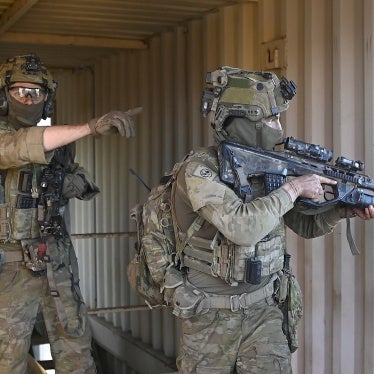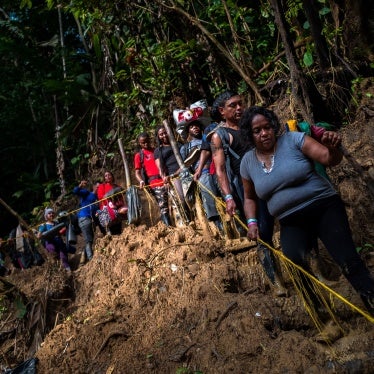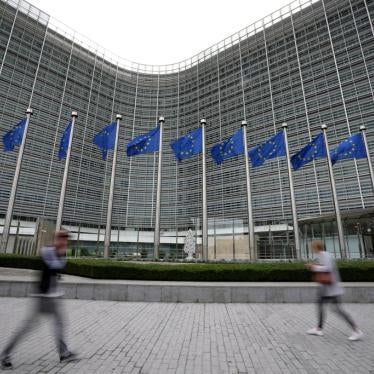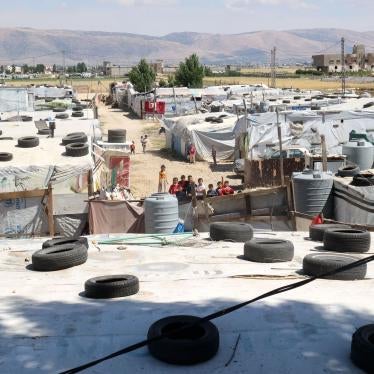What is the humanitarian situation in the Congo?
The humanitarian situation in Congo is one of the worst in the world. According to the International Rescue Committee (IRC), more than 5 million people have died since the war started in 1998, the majority from lack of access to food or health care. It is the deadliest war in the world today, with a much higher civilian death toll than in Afghanistan, Darfur or Iraq - yet we rarely hear about it.
The eastern parts of Congo have been hardest hit. Over a million people are displaced in North and South Kivu provinces and are still too frightened to return to their homes. Since 1998, the situation for women and girls has been particularly desperate. At least 60,000 women and girls have been raped throughout the Congo by militia groups or soldiers from the national army. In one province alone, 4,000 of those raped were children. Children also continue to be recruited into armed service. Congo has one of the highest rates of child soldiers in the world.
But isn’t the war in Congo over and didn’t they have elections?
Congo’s war officially ended in 2003 but fighting continues, mainly in the country’s eastern provinces. In 2006, despite the ongoing violence, Congo held historic elections that for the first time in 40 years allowed people to vote freely for their leaders. While these elections were an important development for the country, they could not fix all of Congo’s problems. Underlying issues such as questions about disarmament of militias, army reform, justice for the victims of abuses, and the illegal exploitation of Congo’s mineral wealth have not been resolved and continue to cause difficulties.
Hasn’t the new peace agreement improved the situation?
On January 23, 2008, a ceasefire agreement was signed by the government and 22 armed groups in the eastern town of Goma following weeks of negotiations. The international community played a vital role in negotiating the agreement and urging the various groups to sign it. Following the signing, the Congolese government set up a peace program for eastern Congo, called the “Amani program,” and appointed Abbé Apollinaire Malu Malu, a Catholic priest, to spearhead the efforts towards peace.
These steps are all very important, and could provide a foundation for peace, but they have yet to bring about concrete results for the hundreds of thousands of people at risk. All the groups who signed the peace agreement made a commitment to stop human rights abuses. But since the peace negotiations, the United Nations and others have reported that at least 86 civilians were deliberately killed, executed or “disappeared,” some of them children. At least 500 women and girls were raped – as this figure only reflects those who reached a clinic for medical treatment, the real figure is likely much higher. In the town of Shabunda in the province of South Kivu, at least 50 women and girls were reported raped each month since January 2008.
It is crucial that the UN and concerned governments move from words on a piece of paper to action.
What is the UN doing in eastern Congo? Isn't it their responsibility to protect civilians?
The United Nations has 17,000 peacekeeping troops in Congo, the largest peacekeeping force in the world. But they are spread out across a vast region the size of western Europe and they cannot be everywhere at once. They do have a mandate to protect civilians and they need to be doing this better, especially protecting women and girls from rape. While the UN has an important responsibility for peacekeeping, it is ultimately armed groups and the government who must find peaceful solutions to Congo’s problems.
What is the international community doing?
Special envoys from the African Union, the European Union, the United States, the United Nations and the International Conference on the Great Lakes Region (ICGLR) played a vital role in negotiating the January peace agreement in Goma and continue to work together to help bring peace to eastern Congo. In November 2007, they helped to facilitate an agreement between the governments of Congo and Rwanda, known as the Nairobi Communiqué, which seeks to tackle the presence of Rwandan Hutu militias, or FDLR, an armed group whose leaders participated in the genocide in Rwanda and then fled to eastern Congo 14 years ago.
The conclusion of the Goma agreement and the Nairobi communiqué were crucial first steps in trying to resolve the conflict in eastern Congo. But the next step, perhaps even more important, is the implementation of the agreements. On April 23, 2008 more than 63 leading international and Congolese human rights and aid groups issued a public statement urging the parties to the Goma agreement and the international community to move to implementation of the accords and end the horrific suffering of the people of eastern Congo. The group specifically pressed for the appointment of a high level special advisor on human rights for eastern Congo to focus attention on the plight of civilians.
Why aren't the armed groups abiding by the ceasefire?
It has taken much longer than expected for a Joint Technical Committee on Peace and Security to be established to monitor the Goma agreement and work out the details of troop disengagement. This committee, which has representatives from all the armed groups, had its first official meeting on April 3, 2008, over two months after the agreement was signed. It is jointly chaired by the government and representatives of the international community. International and Congolese human rights and aid groups hope that the independent special advisor for human rights can play a vital role in helping this committee tackle human rights issues that will inevitably come up. For example, already some of the armed groups have asked that the question of captured combatants be dealt with urgently.
How can the international community punish armed groups that violate the ceasefire? Does it need to apply sanctions?
There are already arms sanctions in place against many of the armed groups in Congo. If they do not adhere to the peace agreement, other sanctions could be put in place like travel bans, asset freezes or similar.
But most importantly, the armed groups’ leaders and others who commit massive crimes against civilians should be reminded that they will be held to account for the crimes they have committed. The international community should give this message loud and clear to all those who rape, kill and torture people throughout the Congo.
Aren't minerals fuelling the conflict in DRC? How can the international community stop this?
The exploitation of Congo’s mineral wealth has been a big part of the conflict. Efforts to make peace in Congo risk failure unless the issue of natural resource exploitation and its link to human rights abuses are put at the top of the agenda. Donor governments should ensure this issue is central to their foreign policy and aid programs. Also, business corporations who work in Congo have a responsibility to ensure that their trade is not fuelling the conflict and instead supports peace and respect for human rights.
Surely a major problem is the flow of arms into the DRC. How can this be stopped?
Small arms and other weapons have flooded eastern Congo since the beginning of the wars in 1996 and have contributed to making the problem much worse. There has been a UN arms embargo in place since 2003 against militia groups operating in Congo, but is has been repeatedly violated. It is essential that such arms flows are halted and this requires greater action on the part of the UN and on those countries who manufacture and export weapons.
Will a special advisor on human rights really make any difference to the horrific violence civilians are experiencing?
The massive human rights abuses going on in Congo have been ignored for too long. A high level special advisor on human rights for the peace process could help make a significant difference on focusing attention on the human rights issues and making sure that the parties to the accords actually live up to their commitments. The special advisor could act as a loud voice to speak up for the people of eastern Congo whose voices are rarely heard.
But does more need to be done - a special advisor isn't the complete answer is it?
A special advisor on human rights is only part of the answer, though it would be a very important step. For eastern Congo, it is also crucial that there is progress on disarming the Rwandan Hutu militias, the FDLR, whose combatants have terrorized the citizens of eastern Congo for more than a decade. The governments of Rwanda and Congo need to be pressed to move forward on implementing the terms of the Nairobi communiqué. In addition there needs to be urgent reform of Congolese national army. Ill disciplined and underpaid government soldiers are responsible for a large number of the human rights violations throughout the Congo, not just in the east. Without army reform, Congolese people will continue to be victims of abuse.
Congo’s problems will not be fixed overnight and there is no magic formula. But starting to bring attention to the suffering of its people, taking steps to end the abuses, and bringing to justice those who are responsible will be significant steps in the right direction.
Who would appoint this special advisor?
A number of options have been presented to Abbé Malu Malu and to the international community representatives who helped negotiate the peace agreement. It is now up to them to act. Abbe Malu Malu, as the coordinator of the Amani peace program, should be the one to bring about this appointment.
Human rights issues are central to the conflict since all sides claim they took up guns to protect their people. Only by making human rights issues central to the peace discussions, can there be any hope that it will succeed.
Last updated: April 25, 2008







